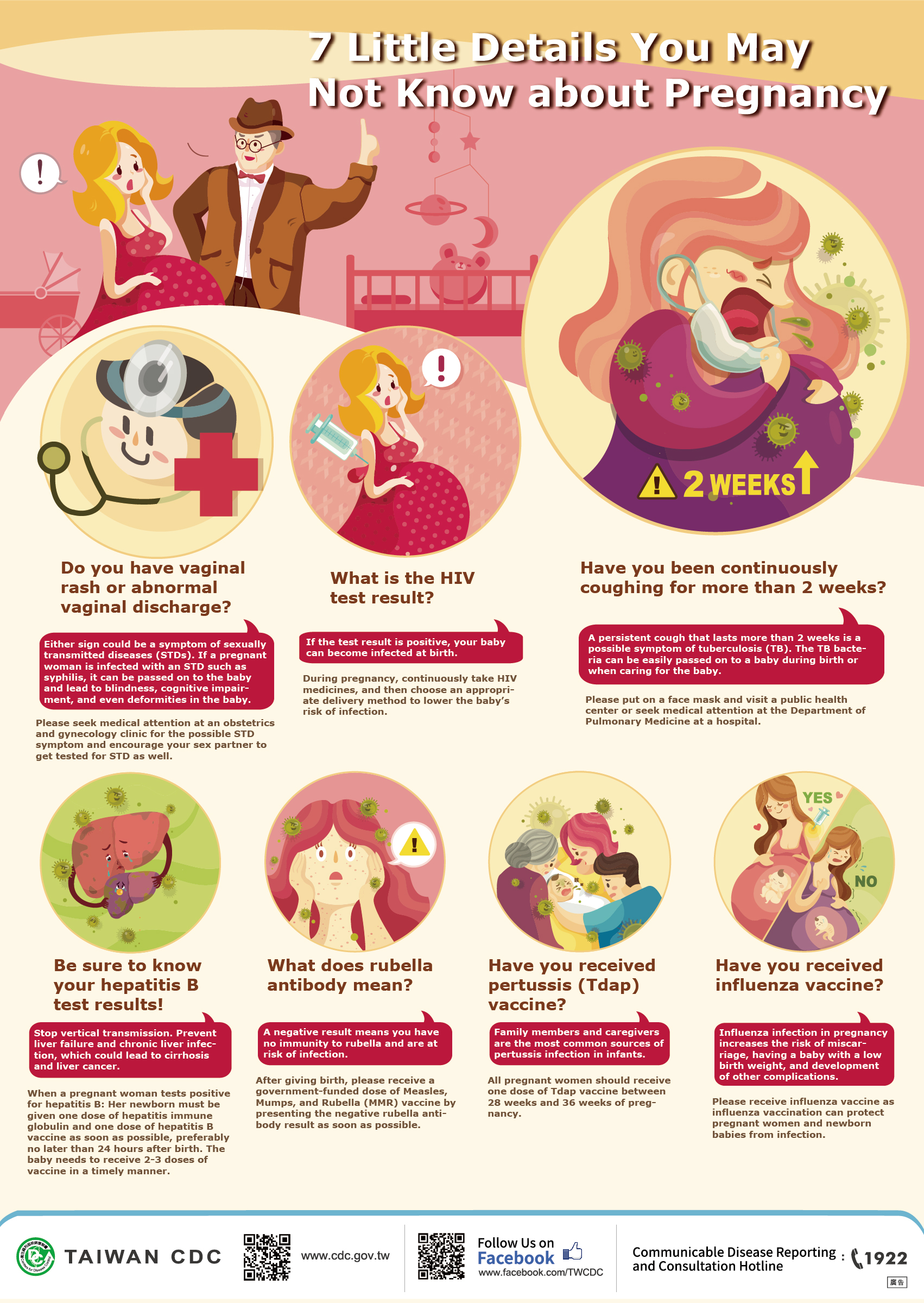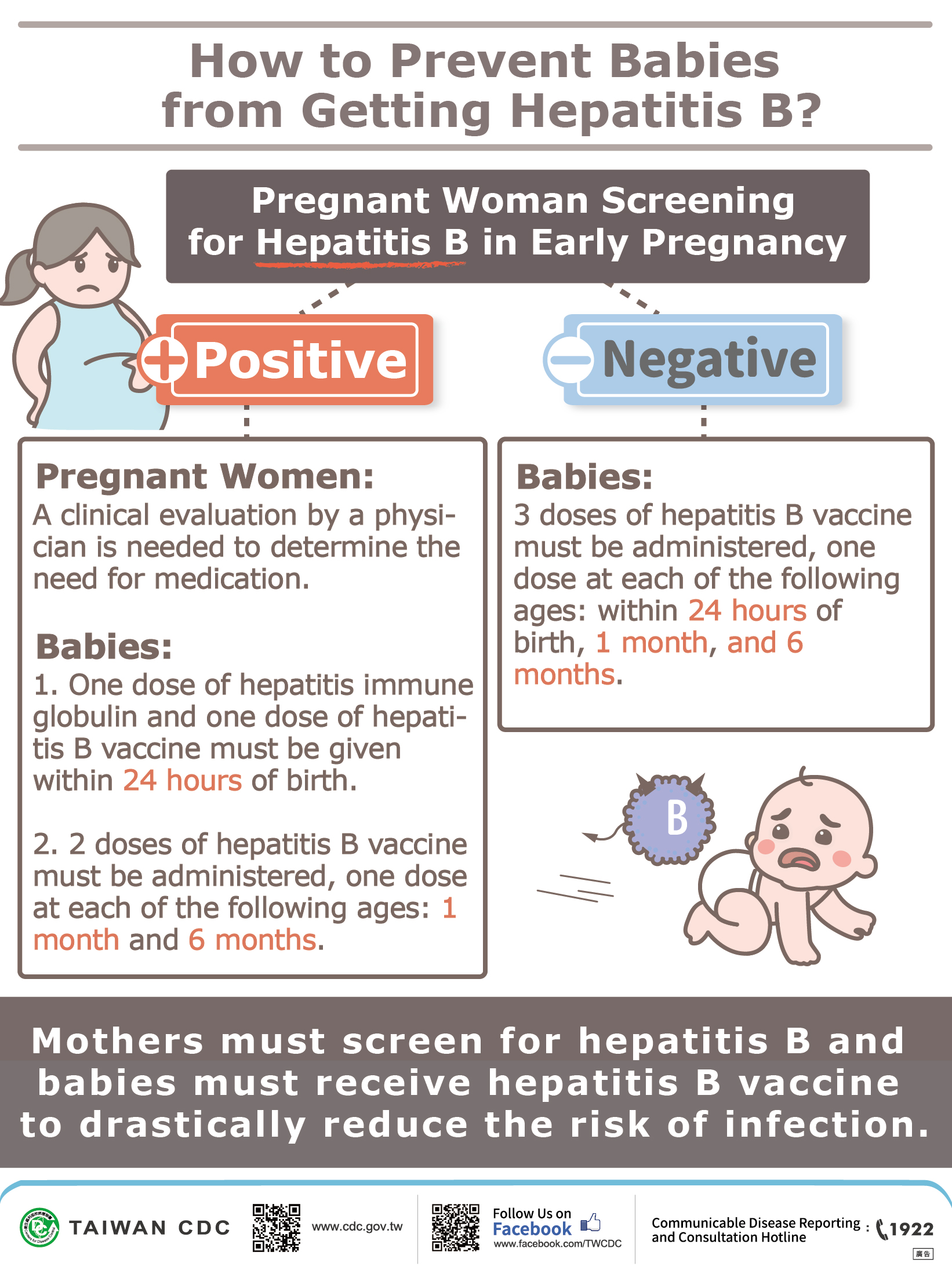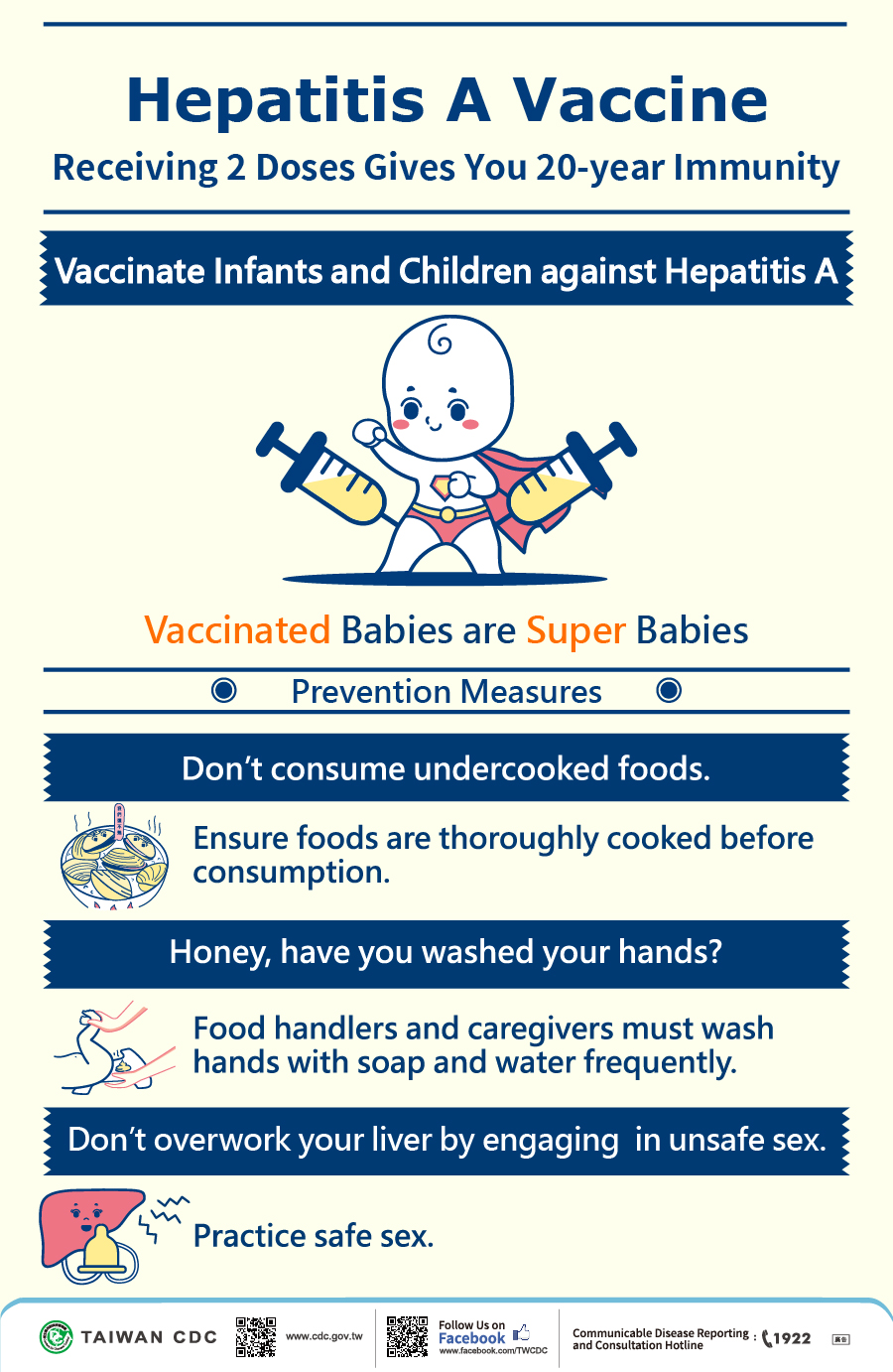Acute Hepatitis
Hepatitis is an inflammation of the liver, most commonly caused by a viral infection. There are five main hepatitis viruses, referred to as types A, B, C, D and E. These five types are of greatest concern due to the disease burden and associated death they cause, the potential for outbreaks and the epidemic spread. In particular, types B and C lead to chronic hepatitic diseases in hundreds of millions of people and, together, are the most common cause of liver cirrhosis and cancer.
Hepatitis A and E are typically caused by ingestion of contaminated food or water. Hepatitis B, C and D usually occur as a result of parenteral contact with infected body fluids. Common modes of transmission for these viruses include receipt of contaminated blood or blood products, invasive medical procedures using contaminated equipment and for hepatitis B transmission from mother to baby at birth, from family member to child, and also by sexual contact.
Acute infection may occur with limited or no symptoms, or may include symptoms such as jaundice (yellowing of the skin and eyes), dark urine, extreme fatigue, nausea, vomiting and abdominal pain.
Source: WHO | Hepatitis
Epidemiology
Hepatitis A is a viral liver disease that can cause mild to severe illness. Globally, there are an estimated 1.4 million cases of hepatitis A every year. In Taiwan, an average of 113 confirmed cases were reported to Taiwan’s notifiable disease system during 2010 to 2014. In 2016, Taiwan experienced one of the most severe hepatitis A outbreaks in history. There were 1,133 confirmed cases in 2016, 47% of cases were co-infected with HIV. The hepatitis A virus is transmitted through ingestion of contaminated food and water or through direct contact with an infectious person. Hepatitis A is associated with a lack of safe water and poor sanitation. Epidemics can be explosive and cause significant economic losses. Improved sanitation and the hepatitis A vaccine are the most effective ways to combat the disease.
Hepatitis B is a viral infection that attacks the liver and can cause both acute and chronic disease. The virus is transmitted through contact with the blood or other body fluids of an infected person. An estimated 257 million people are living with hepatitis B virus infection (defined as hepatitis B surface antigen positive). In Taiwan, about 100-125 confirmed cases were reported to Taiwan’s notifiable disease system during 2012 to 2016. Hepatitis B is an important occupational hazard for health workers. Hepatitis B is preventable with the currently available safe and effective vaccine.
Hepatitis C is a liver disease caused by the hepatitis C virus: the virus can cause both acute and chronic hepatitis infection, ranging in severity from a mild illness lasting a few weeks to a serious, lifelong illness. The hepatitis C virus is a bloodborne virus and the most common modes of infection are through exposure to small quantities of blood. This may happen through injection drug use, unsafe injection practices, unsafe health care, and the transfusion of unscreened blood and blood products. Globally, an estimated 71 million people have chronic hepatitis C infection. A significant number of those who are chronically infected will develop cirrhosis or liver cancer. In Taiwan, the case definition of acute hepatitis C was amended since March 2014. An average 210 confirmed cases were reported to Taiwan’s notifiable disease system during 2014 to 2016. Antiviral medicines can cure more than 95% of persons with hepatitis C infection, thereby reducing the risk of death from liver cancer and cirrhosis, but access to diagnosis and treatment is low. There is currently no vaccine for hepatitis C, however research in this area is ongoing.
Hepatitis D is a liver disease in both acute and chronic forms caused by the hepatitis D virus (HDV) that requires HBV for its replication. The virus is transmitted through contact with the blood or other body fluids of an infected person. Approximately 15 million people across the world are chronically co-infected with HDV and HBV. In Taiwan, about 0-5 confirmed cases were reported to Taiwan’s notifiable disease system during 2005 to 2016. Currently there is no effective antiviral treatment for hepatitis D. Hepatitis D infection can be prevented by hepatitis B immunization.
Hepatitis E is usually self-limiting but may develop into fulminant hepatitis (acute liver failure). Every year there are an estimated 20 million hepatitis E infections, over 3 million acute cases of hepatitis E, and 56,600 hepatitis E-related deaths. The hepatitis E virus is transmitted via the faecal-oral route, principally via contaminated water. Hepatitis E is found worldwide, but the prevalence is highest in East and South Asia. China has produced and licensed the first vaccine to prevent hepatitis E virus infection, although it is not yet available globally.
Source: WHO | Hepatitis: fact sheets
Hepatitis Surveillance in Taiwan
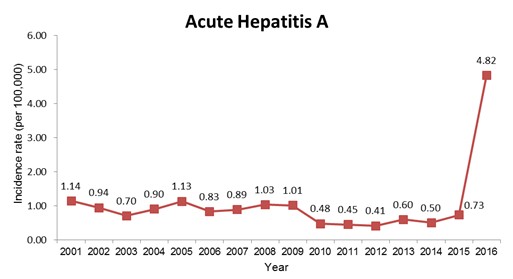
Figure1: Incidence Rate of Acute Hepatitis A in Taiwan (2001-2016)
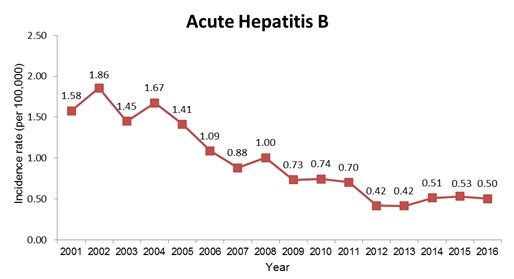
Figure2: Incidence Rate of Acute Hepatitis B in Taiwan (2001-2016)
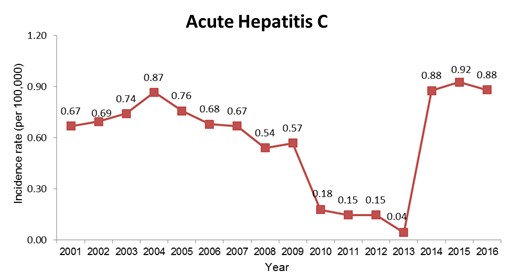
Figure3: Incidence Rate of Acute Hepatitis C in Taiwan (2001-2016)
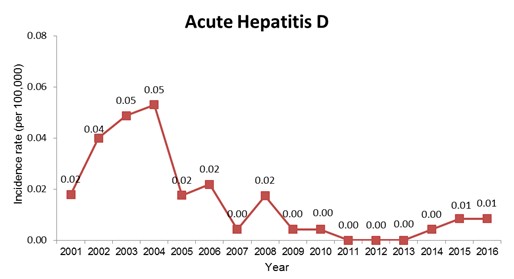
Figure4: Incidence Rate of Acute Hepatitis D in Taiwan (2001-2016)
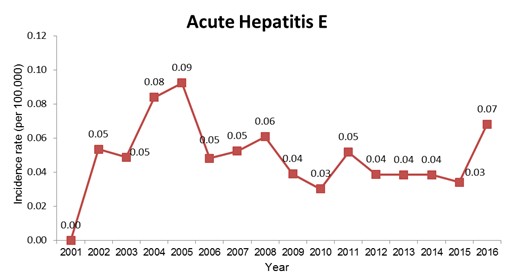
Figure5: Incidence Rate of Acute Hepatitis E in Taiwan (2001-2016)
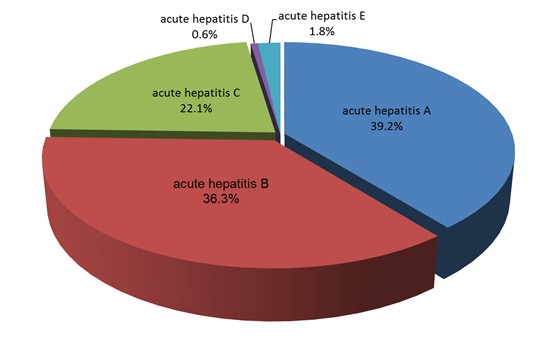
Figure6: Proportion of Acute Hepatitis Cases in Taiwan, 2001-2016
Taiwan National Infectious Disease Statistics System
- Acute Hepatitis A
- Acute Hepatitis B
- Acute Hepatitis C
- Acute Hepatitis D
- Acute Hepatitis E
- Acute Viral Hepatitis, untyped
Prevention and Control
Hepatitis A
- Improved sanitation, food safety and immunization are the most effective ways to combat hepatitis A.
- The spread of hepatitis A can be reduced by:
- Adequate supplies of safe drinking water;
- Proper disposal of sewage within communities;
- Good personal hygiene practices, such as regular hand-washing with soap and water.
- Several hepatitis A vaccines are available internationally. All are similar in terms of how well they protect people from the virus and their side-effects. No vaccine is licensed for children younger than one year of age.
- Nearly 100% of people develop protective levels of antibodies to the virus within one month after a single dose of the vaccine. Even after exposure to the virus, a single dose of the vaccine within two weeks of contact with the virus has protective effects. Still, manufacturers recommend two vaccine doses to ensure a longer-term protection of about five to eight years after vaccination.
- Millions of people have been immunized worldwide with no serious adverse events. The vaccine can be given as part of regular childhood immunizations programmes and also with other vaccines for travelers.
- The best way to prevent Hepatitis A is through vaccination with the Hepatitis A vaccine. Vaccination is recommended for all children, for travelers to certain countries, and for people at high risk for infection with the virus. Frequent handwashing with soap and warm water after using the bathroom, changing a diaper, or before preparing food can help prevent the spread of Hepatitis A.
Source: Source: WHO | Hepatitis A
Hepatitis B, C & D
Most of those infected don’t know they have it, increasing the risk of developing severe liver disease and transmitting the virus to others.
GET TESTED! YOU ARE AT RISK IF:
- You’ve ever had medical or dental treatment with unsterile instruments;
- You’ve received a blood transfusion in a country that does not test for hepatitis;
- You are living with HIV;
- You have ever injected drugs;
- Your mother was infected with hepatitis when you were born.
WAYS TO PROTECT YOURSELF
- Talk to your healthcare provider about the hepatitis B vaccine;
- Use only sterilized tattoo and piercing instruments;
- Use barriers (e.g. condoms) during sexual contact, including oral sex and genital contact. (Hepatitis B could be transmitted through unprotected sex, including oral sex and anal sex, with an infected person.)
- Where possible, choose oral medications instead of injections;
- NEVER share needles, razors or toothbrushes;
- If you are pregnant, talk to your doctor about how to prevent transmission to your baby.
Source: WHO | 2014 Hepatitis Day
Hepatitis E
- The risk of infection and transmission can be reduced by:
- Maintaining quality standards for public water supplies;
- Establishing proper disposal systems to eliminate sanitary waste.
- On an individual level, infection risk can be reduced by:
- Maintaining hygienic practices such as hand washing with safe water, particularly before handling food;
- Avoiding drinking water and/or ice of unknown purity;
- Adhering to WHO safe food practices.
Source: WHO | Hepatitis E
FAQs
- What is hepatitis?
- Hepatitis is an inflammation of the liver. The condition can be self-limiting or can progress to fibrosis (scarring), cirrhosis or liver cancer. Hepatitis viruses are the most common cause of hepatitis in the world but other infections, toxic substances (e.g. alcohol, certain drugs), and autoimmune diseases can also cause hepatitis.
- There are 5 main hepatitis viruses, referred to as types A, B, C, D and E. These 5 types are of greatest concern because of the burden of illness and death they cause and the potential for outbreaks and epidemic spread. In particular, types B and C lead to chronic disease in hundreds of millions of people and, together, are the most common cause of liver cirrhosis and cancer.
- Hepatitis A and E are typically caused by ingestion of contaminated food or water. Hepatitis B, C and D usually occur as a result of parenteral contact with infected body fluids. Common modes of transmission for these viruses include receipt of contaminated blood or blood products, invasive medical procedures using contaminated equipment and for hepatitis B transmission from mother to baby at birth, from family member to child, and also by sexual contact.
- Acute infection may occur with limited or no symptoms, or may include symptoms such as jaundice (yellowing of the skin and eyes), dark urine, extreme fatigue, nausea, vomiting and abdominal pain.
- What are the different hepatitis viruses?
- Scientists have identified 5 unique hepatitis viruses, identified by the letters A, B, C, D, and E. While all cause liver disease, they vary in important ways.
- Hepatitis A virus (HAV) is present in the faeces of infected persons and is most often transmitted through consumption of contaminated water or food. Certain sex practices can also spread HAV. Infections are in many cases mild, with most people making a full recovery and remaining immune from further HAV infections. However, HAV infections can also be severe and life threatening. Most people in areas of the world with poor sanitation have been infected with this virus. Safe and effective vaccines are available to prevent HAV.
- Hepatitis B virus (HBV) is transmitted through exposure to infective blood, semen, and other body fluids. HBV can be transmitted from infected mothers to infants at the time of birth or from family member to infant in early childhood. Transmission may also occur through transfusions of HBV-contaminated blood and blood products, contaminated injections during medical procedures, and through injection drug use. HBV also poses a risk to healthcare workers who sustain accidental needle stick injuries while caring for infected-HBV patients. Safe and effective vaccines are available to prevent HBV.
- Hepatitis C virus (HCV) is mostly transmitted through exposure to infective blood. This may happen through transfusions of HCV-contaminated blood and blood products, contaminated injections during medical procedures, and through injection drug use. Sexual transmission is also possible, but is much less common. There is no vaccine for HCV.
- Hepatitis D virus (HDV) infections occur only in those who are infected with HBV. The dual infection of HDV and HBV can result in a more serious disease and worse outcome. Hepatitis B vaccines provide protection from HDV infection.
- Hepatitis E virus (HEV) is mostly transmitted through consumption of contaminated water or food. HEV is a common cause of hepatitis outbreaks in developing parts of the world and is increasingly recognized as an important cause of disease in developed countries. Safe and effective vaccines to prevent HEV infection have been developed but are not widely available.
More Information
- WHO |Hepatitis
- US CDC | Viral Hepatitis
Images
